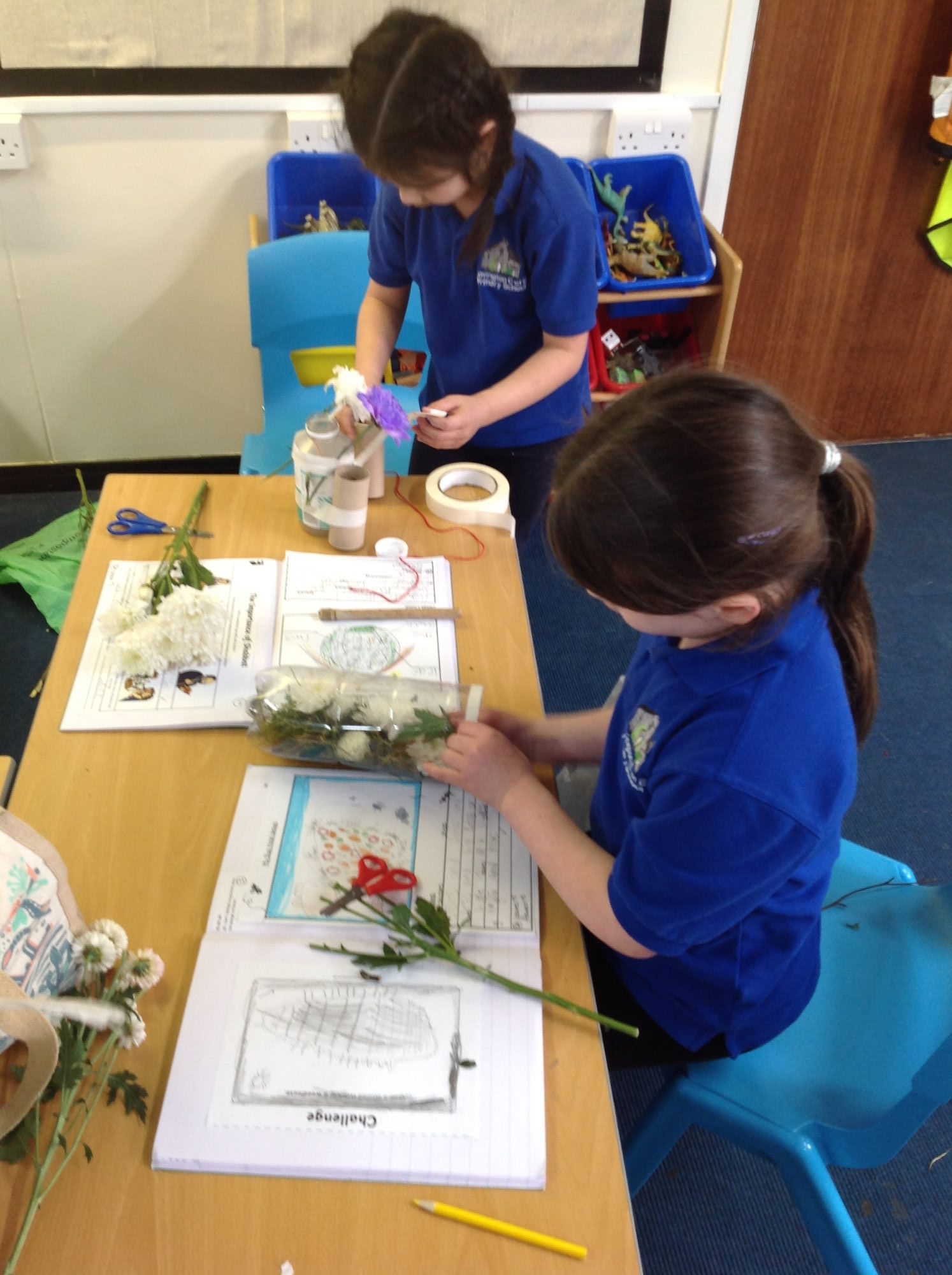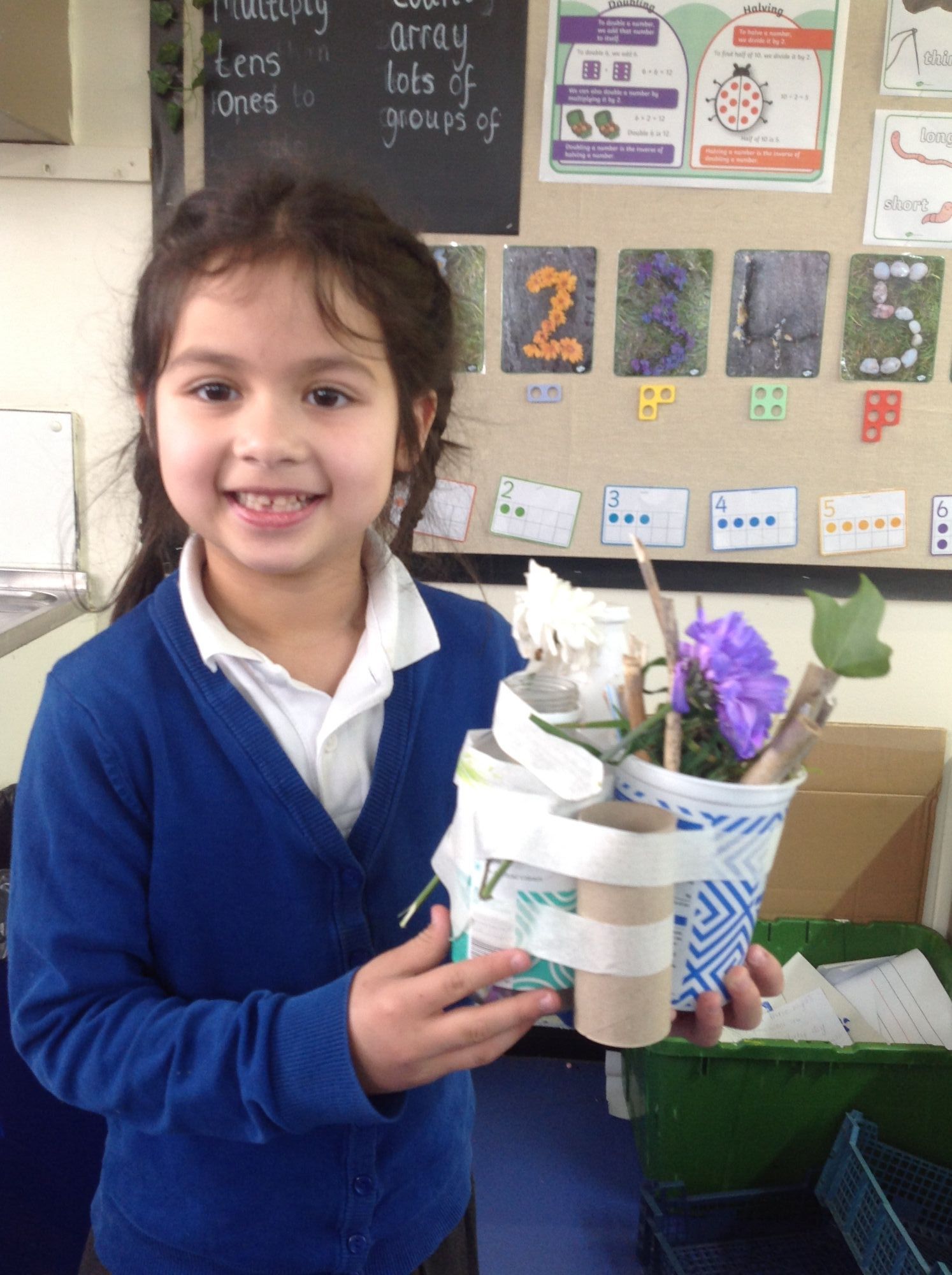Design and Technology
Intent
At Lovington Primary School, our Design Technology curriculum develops children's learning and results in the acquisition of knowledge and skills. Children will know more, remember more and understand more after experiencing practical tasks.
At Lovington, Design and Technology should be fully inclusive for every child. Our aims are to:
- Fulfil the requirements of the National Curriculum for Design and Technology.
- Provide a broad and balanced curriculum.
- Ensure the progressive development of knowledge and skills.
- Learn how to take risks
- Become resourceful, innovative, enterprising and capable citizens through evaluation of past and present design and technology.
- Develop a critical understanding of its impact on daily life and the wider world.
- Participate successfully in an increasingly technological world, using the language of Design and Technology.


Pippin Class - Designing and Building Bug Hotels
February 2024
Implementation
To ensure high standards of teaching and learning in Design and Technology, we implement a curriculum that is progressive throughout the whole school. Design and Technology is taught, focusing on knowledge and skills stated in the National Curriculum. We work hard to ensure that it is given the same importance as the core subjects, as we feel this is so important in our rapidly changing world and enables all our children to gain ‘real-life’ experiences.
The Design and Technology curriculum at Lovington is based upon the 2014 Primary National Curriculum in England, which provides a broad framework and outlines the knowledge and skills taught in each Key Stage. Teachers plan lessons for their class using our progression of knowledge and skills documents. Teachers are aware of our children’s cultural capital, and we ensure the opportunities in Design & Technology allow children to develop key life skills within cooking & nutrition. The progression document ensures that the curriculum is covered and the skills and knowledge are taught progressively from year to year.
When teaching Design and Technology, a variety of teaching approaches are used based on the teacher’s judgement. The children’s work is displayed in corridors after learning experiences or families may be invited in to share the learning outcome.
We provide a variety of opportunities for Design and Technology learning, to take place both inside and outside the classroom.
Educational visits are another opportunity for teachers to plan for additional opportunities both inside or outside the classroom. We have many visitors coming into school including local bakers and the Royal Navy STEM team.

“Design can help to improve our lives in the present. Design thinking can help us chart a path into the future.”
Tim Brown
Impact
Within Design and Technology, we strive to prepare children to take part in the development of tomorrow’s rapidly changing world. We aim to encourage children to become creative problem-solvers, both as individuals and as part of a team. Through this subject, children combine practical skills with an understanding of aesthetic, social and environmental issues, as well as functions and industrial practices. This allows them to reflect on and evaluate present and past design, its uses and its impact. Our curriculum is well thought through and is planned to demonstrate progression. We focus on the progression of knowledge and skills. Discreet vocabulary progression also forms part of our units of work.
Assessment
We measure the impact of our curriculum through the following methods:
- Assessing children’s understanding of relevant vocabulary before and after the unit is taught, this is done through formal assessments as well as weekly quizzes.
- Reviewing the images and outcomes of the children’s practical lessons.
- Children’s own evaluations of products.
- Interviewing the pupils about their learning (pupil voice).

